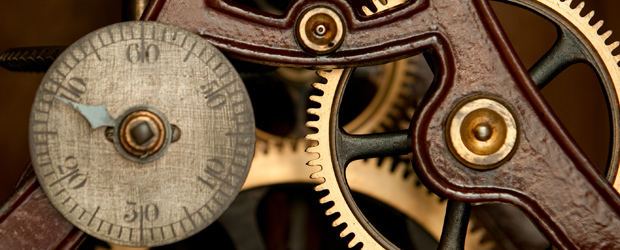Time could be running out for the leap second
The end of time as we know it? Well, sort of. On Thursday, countries will decide whether to scrap leap seconds to bring different ways of measuring time in sync. Channel 4 News looks at why.
Many years ago, in simpler times, all you had to do to tell the time was glance up at the sky and have a look where the sun was.
Things have got more complicated since then – and now it has even become something of a political hot potato.
This week, countries are meeting at the International Telecommunications Union (ITU) in Geneva to decide whether to eliminate the so-called “leap second”, which has kept computer systems in sync with the earth day for around 40 years.
Leap seconds were introduced in 1972, when atomic time became the standard measure for time as part of Coordinated Universal Time (UTC). They are necessary to prevent atomic clocks from speeding ahead of solar time, which is measured by the movement of the earth around the sun and the earth’s rotation.
Without leap seconds we will eventually lose the link between time and people’s everyday experience of day and night. David Willetts
The problem is that this measure of time – known as universal time – fluctuates due to the earth’s irregular rotation, tides or earthquakes. But atomic clocks, which rely on the vibrations in atoms to count seconds, are incredibly accurate. So the leap seconds are added to reconcile these differences and prevent the time based on atomic clocks and the time based on the earth’s rotation from drifting ever further out of phase with each other.
Some countries say the leap second causes too many problems because computer systems – from mobile phone networks to GPS navigation to weapons systems – have to effectively stop their clocks for the length of a heartbeat every few years.
Some experts have even suggested this is dangerous in a world reliant on “mission-critical” measurements – for example, if someone is trying to land an aircraft or launch a spaceship.

Vincent Meens, who headed an ITU expert group that recommended removing leap seconds, said: “This will be an important decision because of the problem of introducing the leap second will disappear and we will be able to have a more standard time than the one we have today. Time is very, very important for the synchronisation of all the radiocommunications systems.”
Other countries – including the UK – oppose the change. They say that leap seconds have been used without any problems since 1972 – and also warn that the changes have not been fully considered.
Minister for Universities and Science David Willetts said: “The UK position is that we should stick to the current system used throughout the world. Without leap seconds we will eventually lose the link between time and people’s everyday experience of day and night.”
If leap seconds are abolished, the changes would take effect from 2018 – but there are other concerns as well.
Some experts point out that, without the leap second, the gradual split between atomic time and solar time could eventually see atomic clocks outrunning the solar day by a rate of about 90 seconds a century.
After thousands of years, clocks could get so out of sync with sunrise and sunset that they could say it is midday when outside the sun has not even risen.
Peter Whibberley of the National Physical Laboratory told Channel 4 News: “It is a concern, once you get rid of these seconds there’s no longer any way to bring the atomic scale back into line with Greenwich Mean Time. The only option put forward so far that might be feasible is simply for countries to change their time zone when the sun gets too far off from the clock time.”
Normally, the ITU does not have to go to a vote, but it looks likely this time because of the strong feelings on both sides.
What do you think? Get in touch with Channel 4 News on Facebook or via Twitter, @channel4news
-
Latest news
-
Post Office Inquiry: Chairman intervenes as public gallery scoffs4m

-
Inside Sudan: An unfolding humanitarian catastrophe7m

-
What are the public spending plans for the election promises?3m

-
Michael Matheson faces Scottish parliament suspension over £11,000 iPad bill2m

-
Dudley voters divided on Rishi Sunak’s record as PM13m

-





